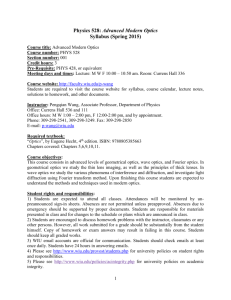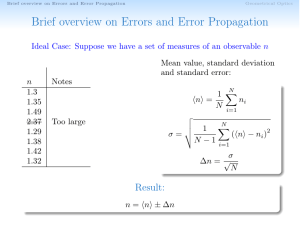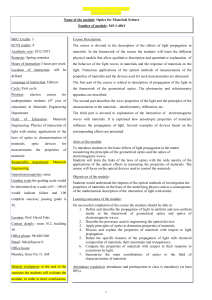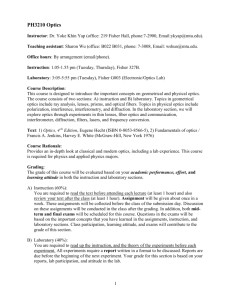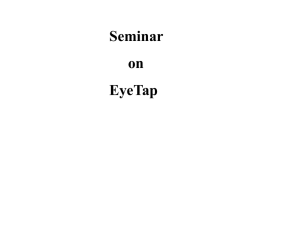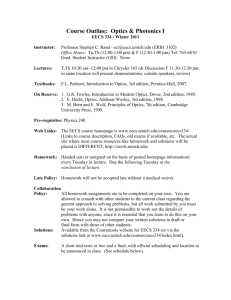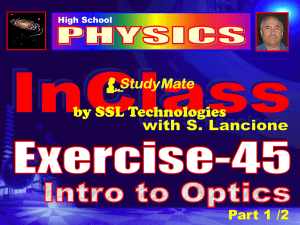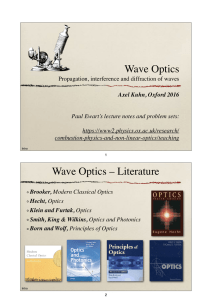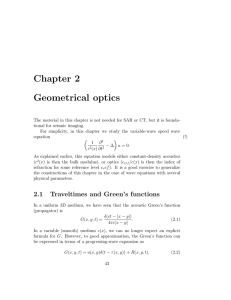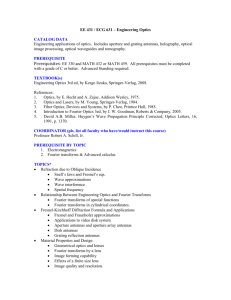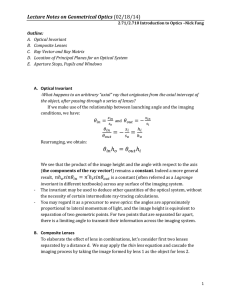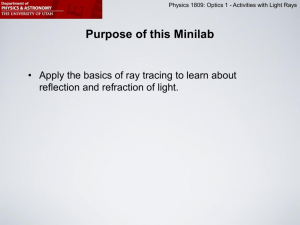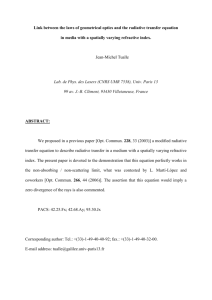Geometrical Optics
advertisement
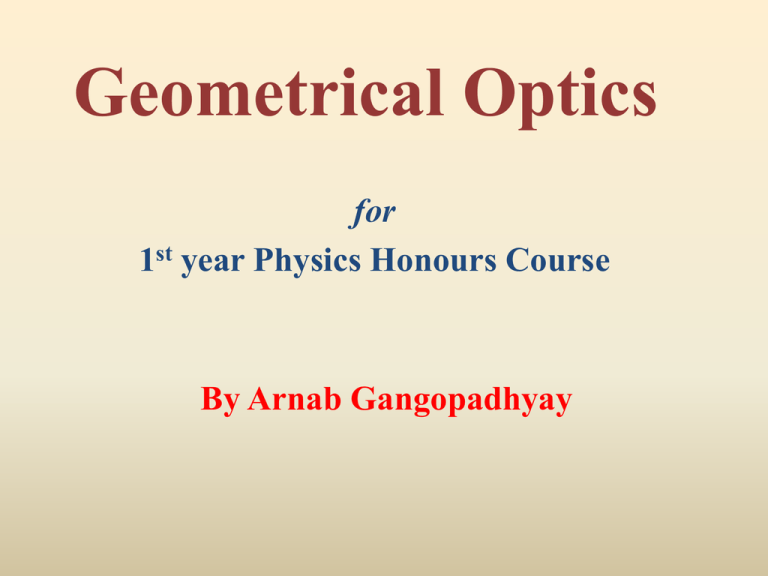
Geometrical Optics for 1st year Physics Honours Course By Arnab Gangopadhyay Light The light, with which we see, is a small part of the vast spectrum of electro magnetic field. Interaction of light with matter divided into three regimes. l << a l~a l >> a Geometrical Optics Physical Optics EM Wave theory Rays of Light The rays are defined as the wave normal The light behaves as stream of energy travelling along the rays which are directed outwards from the source. They obey the classical laws of reflection and refraction. Rays of Light Fermat’s Principle The path along which the disturbance travels from one point to another point is such that the time taken is at a stationary value Refracting index is defined by m=c/v The time taken by the light ray is given by 1 nili t= c i Snell’s law from Fermat’s principle The total optical path is nd . n.d As this to be minimum, d 0 dx After some simple algebra, one can find n.sin i n'sin r Geometrical Optics by Euclidean Geometry Considerations •Rays considered are paraxial rays. •tanq = sinq=q can be used •A co-linear relationship exists between LHS and RHS •Image is said to be conjugate to the object and vice-versa •Reflected ray is conjugate to the incident ray Cardinal points There are total six cardinal or important plains. Principal plane: The planes at which transverse magnification is 1 Nodal plane: The planes at which the angular magnification is 1 Focal plane: The plane has its conjugate at infinity The Helmholtz Lagrange Equation This equation is most fundamental equation of geometrical optics This relates r.i. , angular magnification and transverse magnification between LHS and RHS of the optical system The Helmholtz Lagrange Equation n.h.tanu=n′.h′.tanu′ Reference 1. Geometrical and physical optics by R.S. Longhurst 2. Fundamentals of Optics by F.A. Jenkins and H.E. White. 3. Optics by A.Ghatak
